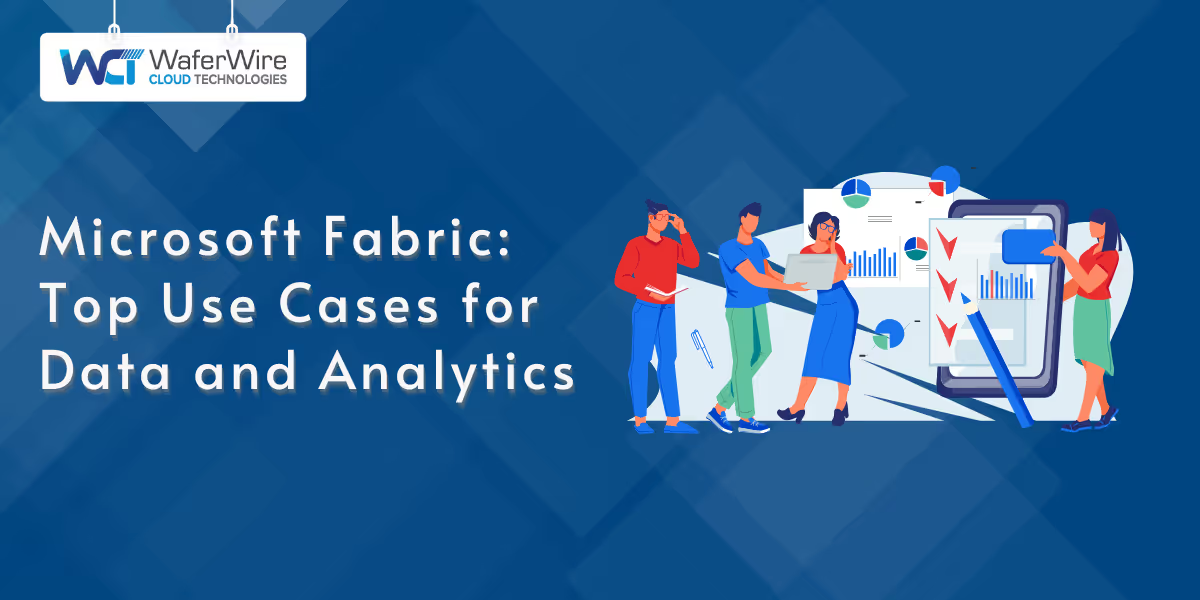

Microsoft Fabric is a unified, AI-powered platform that integrates data engineering, data science, real-time analytics, and business intelligence. By consolidating tools like Azure Synapse and Power BI, industries such as healthcare, retail, and finance can streamline data workflows and drive actionable insights.
This demonstrates that Fabric not only enhances business outcomes but also plays a key role in attracting and retaining top talent.

Microsoft Fabric provides robust integration capabilities, allowing businesses to easily ingest data from various sources and store it efficiently for analysis.
The platform supports multiple methods to streamline data integration:
Microsoft Fabric connects to various data sources via pre-built connectors, REST APIs, file uploads, and real-time IoT streaming.
This allows businesses to centralize data from applications, cloud storage, and on-premises systems into a unified environment.
Once ingested, data is stored in one of two structures, Lakehouse for big data workloads or Datamarts for high-performance analytics.
These storage options enable efficient handling of both structured and unstructured data, making it easy to prepare data for analysis.
Fabric supports complex ETL processes via Azure Databricks notebooks, allowing businesses to clean, transform, and enrich data before it’s used for analytics.
Custom transformations and incremental data refreshes keep the data current and ready for real-time analysis.
With data stored in the Lakehouse or Datamart, businesses can run advanced analytics using Microsoft Fabric's built-in tools. Examples include:
For time-sensitive decision-making, Fabric supports real-time analytics, particularly with IoT data, through its integration with Azure Event Hubs. This enables businesses to act on live data, optimizing operational performance and customer experiences.
Also Read: Microsoft Synapse vs Fabric: Comprehensive Comparison
With a clear understanding of how Microsoft Fabric works, let’s explore the industry-specific use cases where its capabilities truly shine.

Microsoft Fabric provides a comprehensive suite of functionalities tailored to specific industries, enhancing data integration, analytics, and real-time decision-making.
By using Fabric's powerful tools, businesses across various sectors can streamline operations, improve efficiency, and generate actionable insights.
Here are the most impactful use cases across different industries:
Microsoft Fabric consolidates patient records from multiple EHR systems into a single platform, improving access to complete patient histories, diagnostic accuracy, and treatment outcomes.
Key Insights:
Also Read: FHIRbridge®: Your partner in FHIR Migration Journey
Retailers can integrate sales, warehouse, and vendor data into Microsoft Fabric for real-time inventory management and optimized procurement, reducing stockouts and operational costs.
Key Insights:
Microsoft Fabric helps financial institutions consolidate accounting, sales, and operational data to generate real-time reports, perform variance analysis, and forecast future performance.
Key Insights:
By integrating IoT data from production equipment, Microsoft Fabric helps manufacturers predict equipment failures, improve operational efficiency, and reduce unplanned downtime.
Key Insights:
Microsoft Fabric integrates CRM, website, and social media data to provide marketing teams with deeper insights into customer behavior, campaign performance, and ROI.
Key Insights:
Energy companies can integrate sensor data and operational systems into Microsoft Fabric to monitor energy production, optimize consumption, and improve efficiency.
Key Insights:
Also Read: Microsoft Fabric vs AWS: Cloud Platform Comparison Guide
Microsoft Fabric integrates route, shipment, and fleet data to optimize delivery routes, reduce transportation costs, and improve overall logistics efficiency.
Key Insights:
Telecom companies can use Microsoft Fabric to integrate network data and customer usage patterns, optimizing network performance and resource allocation.
Key Insights:
Retail banks can integrate customer transaction and interaction data to develop detailed customer profiles, enabling personalized financial product offerings and improving service.
Key Insights:
Microsoft Fabric helps educational institutions integrate student performance and engagement data, allowing for personalized learning paths and targeted interventions for at-risk students.
Key Insights:
While Microsoft Fabric offers tremendous value, businesses often face challenges during implementation. Let’s now look at the common obstacles and practical solutions to overcoming them.
Implementing Microsoft Fabric presents several challenges that organizations must address to understand its capabilities thoroughly.
Below is an overview of common obstacles and practical solutions to overcome them.
Microsoft Fabric provides a robust solution for data integration, transformation, and analytics, empowering businesses to make informed decisions and optimize operations. To maximize its value, implementing best practices and continuously refining your workflows is key.
At WaferWire, our experts specialize in helping businesses of various sizes implement, customize, and optimize Microsoft Fabric. Whether you're setting up your environment or integrating tools like Power BI, we provide the support you need to enhance your data strategy.
Contact WaferWire today to elevate your data transformation processes.
Q: How does Microsoft Fabric handle large-scale data processing?
A: Microsoft Fabric’s Lakehouse architecture scales efficiently to handle vast datasets by combining the flexibility of a data lake with the performance of a data warehouse. It allows for seamless big data processing without compromising speed or storage efficiency.
Q: Can Microsoft Fabric integrate with non-Microsoft tools?
A: Yes, Microsoft Fabric supports integration with a variety of third-party tools and services through pre-built connectors and REST APIs, enabling seamless connections with platforms outside the Microsoft ecosystem.
Q: How does Microsoft Fabric support machine learning and AI models?
A: Microsoft Fabric integrates with Azure Machine Learning and Databricks, allowing businesses to build, train, and deploy machine learning models within the platform. This enhances data analytics with predictive capabilities and AI-driven insights.
Q: What is the cost model for using Microsoft Fabric?
A: Microsoft Fabric follows a pay-as-you-go pricing model, allowing businesses to pay for the resources they use, including compute, storage, and data processing. This provides flexibility to scale as needed without upfront costs.
Q: How does Microsoft Fabric improve data collaboration across teams?
A: Microsoft Fabric enables collaboration by providing a centralized platform where data engineering, data science, and business teams can access and work with the same datasets in real time, improving alignment and decision-making across departments.

